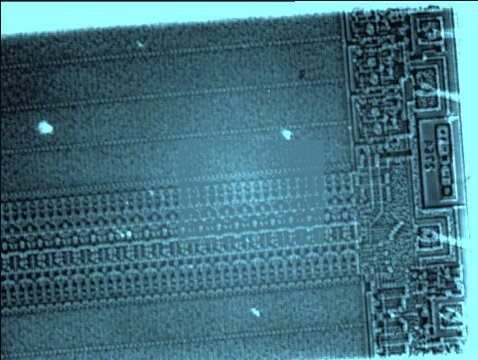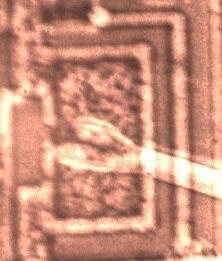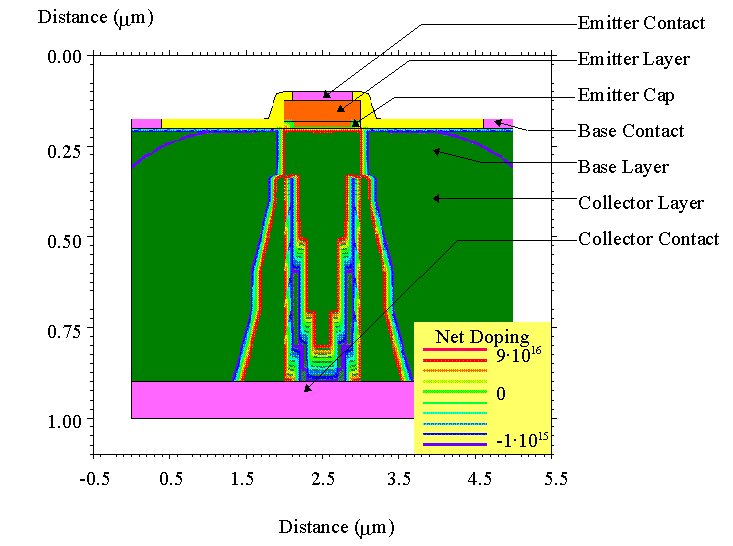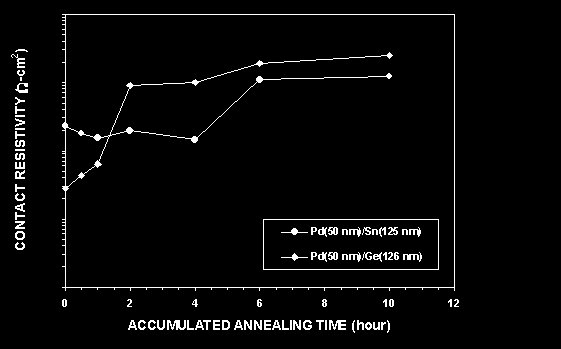
MICROELECTRONICS RESEARCH LABORATORY
DUBLIN CITY UNIVERSITY, DUBLIN 9, IRELAND
Contents
![]() Ongoing
Research Areas & Partners
Ongoing
Research Areas & Partners
![]()
MRL is a Key Technology Laboratory within a new National Centre of Excellence called RINCE (pronounced 'rink-eh' with a hard 'c'). RINCE, the Research Institute for Network & Communications Engineering, is one of the Irish government's initiatives being funded under the Higher Education Authority's (HEA) Programme for Research in Third Level Institutions 1999-2001. RINCE is a national centre for excellence in information and communications technology. It is based in the School of Electronic Engineering at Dublin City University here in Ireland.
RINCE is currently offering exciting Postgraduate Research Opportunities in many different research areas. Please click on the RINCE link above for more information.
Director: Patrick J. McNally, BE, ScM, PhD, CPhys, MInstP, MIEI, MIEEE.
Established: 1993.
Current Human Resources: 1 University Lecturer, 3 PhD Students, 2 MEng Students, 4 BEng Students.
Key Outputs: Academic Publications & Papers; Industrial & academic collaboration in Ireland, France, Italy, Germany, Netherlands, U.S.A. and Finland; Ireland's only access to synchrotron X-ray topography characterisation. Student Training. Consultancy.
Further
information from:
Director, Microelectronics Research Laboratory, School of Electronic Engineering, Dublin City University, Dublin 9, IRELAND.
email: mcnallyp@eeng.dcu.ie
![]()
![]() Class 100 clean room facilities.
Class 100 clean room facilities.
![]() Karl Suss MJB300 mask aligner - sub micron photolithography.
Karl Suss MJB300 mask aligner - sub micron photolithography.
![]() Laurell photoresist spinner.
Laurell photoresist spinner.
![]() Plasma Technology plasma RIE etcher.
Plasma Technology plasma RIE etcher.
![]() Scientific Systems Ltd. (Dublin 9, IRL) Plasma Impedance
Monitor.
Scientific Systems Ltd. (Dublin 9, IRL) Plasma Impedance
Monitor.
![]() Metal deposition facilities: resistive thermal and e-beam.
Metal deposition facilities: resistive thermal and e-beam.
![]() Dielectric sputter etch facilities.
Dielectric sputter etch facilities.
![]() Refractory metal sputtering.
Refractory metal sputtering.
![]() Graphite strip annealer.
Graphite strip annealer.
![]() Signetics probe station.
Signetics probe station.
![]() Curve tracers, spectrum analyzers, lock-in amplifiers etc.
Curve tracers, spectrum analyzers, lock-in amplifiers etc.
![]() ESCA and Auger Electron Spectroscopy facilities..
ESCA and Auger Electron Spectroscopy facilities..
![]() Sula Technologies Deep Level transient Spectroscopy (DLTS)
system with Cold Stage.
Sula Technologies Deep Level transient Spectroscopy (DLTS)
system with Cold Stage.
![]() Jobin-Yvon Modular Integrated Raman/Photoluminescence system
(HeNe Laser with resolution down to 1 cm-1).
Jobin-Yvon Modular Integrated Raman/Photoluminescence system
(HeNe Laser with resolution down to 1 cm-1).
![]() Photoacoustic Spectroscopy system utilising the gas chamber cell
concept for sub-bandgap non-radiative de-excitation spectroscopy.
Photoacoustic Spectroscopy system utilising the gas chamber cell
concept for sub-bandgap non-radiative de-excitation spectroscopy.
![]() Access to synchrotron x-ray topography characterisation
facilities at HASYLAB, Germany.
Access to synchrotron x-ray topography characterisation
facilities at HASYLAB, Germany.
![]() X-ray topography image processing facilities, incl. Zeiss
optical microscope, CCD image capture and Visilog-based image enhancement and
processing.
X-ray topography image processing facilities, incl. Zeiss
optical microscope, CCD image capture and Visilog-based image enhancement and
processing.
![]() Sun workstations, Javastations and personal computers.
Sun workstations, Javastations and personal computers.
![]() Electronic device simulation software (MEDICI) - homojunction
and heterojunction devices.
Electronic device simulation software (MEDICI) - homojunction
and heterojunction devices.
![]() Simulation of device processing (using Tsuprem4 and QuickField)
especially process-induced stresses and their impact.
Simulation of device processing (using Tsuprem4 and QuickField)
especially process-induced stresses and their impact.
![]()
Ongoing Research Areas and Partners
Current
Partnerships
(1) HASYLAB-DESY (Hamburger Synchrotronstrahlungslabor am Deutsches Elektronen- Synchrotron), Hamburg, Germany: Provides high intensity synchrotron X-radiation facilities allowing MRL to perform state-of-the-art and novel materials/device processing characterisation.
(2) Optoelectronics Laboratory, Helsinki University of Technology, Finland: Collaboration on synchrotron x-ray topography (SXRT) analysis of materials/device processing (Prof. T. Tuomi)
(3) Kristallographisches Institut, University of Freiburg, Germany: Collaboration on a comparative analysis of advanced III-V (e.g GaAs, InP) earth- and space-grown materials, and implications for future device fabrication (Dr. A.N. Danilewsky).
(4) Plasma Ireland Ltd., Cork: Examination of failure mechanisms in packaged LEDs using x-ray topography, micro-Raman strain measurements, optical emission spectroscopy and I-V characterization.
(5) Intel Ireland Ltd., Leixlip, Ireland: Use of synchrotron x-ray topography and micro-Raman spectroscopy to monitor the stress-related impact of copper metallization process options for CMOS processes. Analysis of stress/defect production due to Pb-based flip-chip technologies.
(6) Physicalisch-Technische Bundesanstalt
(PTB), Braunschweig, Germany: Use of x-ray topographic techniques to verify the
crystalline quality of Si single crystals used in the Avogadro Project,
which aims to redifine the KILOGRAMME using perfect Si, in order to allow
worldwide laboratory-based replication of this international standard (in
collaboration with Helsinki University of Technology).
Ongoing Research
Semiconductor Device(s) Processing
* Process induced defects/stresses;
* Synchrotron x-ray topography


Examples of
two back-reflection synchrotron x-ray topographs of strain fields in a packaged
IC . The red image is a blow-up of the strain fields/defect generation under
the bonding pad (second from the top on the right hand side) of the packaged IC
(blue image).
* Finite element/difference modelling
Semiconductor Device Modelling
* Advanced semiconductor devices
* Orientational & dimensional effects
* Analysis of the impact of stress on device characteristics

Recent
simulation of process stress-induced (compressive overlayer stress=107
Pa)piezoelectric charge distrubution for a [01-1] AlGaAs/GaAs HBT. The impact
of this charge is, in fact, extremely small (1997)
* Defects/Yield
Metal-Semiconductor Contact Technology
* Schottky barriers
* Ohmic contacts
* Metallisation techniques

Recent data
for thermal stability of novel Pd/Sn-based Ohmic contacts to n-GaAs
* Theoretical modelling
* Materials characterization
* Spectroscopic techniques
Semiconductor Plasma Processing
* Industrial plasma control
* In-situ, real-time plasma diagnostics
* Plasma impedance monitoring
* Modelling of harmonic contributions to non-symmetrical rf plasmas

Recent
measurements of the fundamental harmonic component of Plasma Impedance [Z(0)]
for an SF6 RIE configuration plasma as a function of applied power
(f=13.56 MHz)
![]()
Click HERE for details of recent research papers
![]()
RINCE - Research Institute for Network & Communications Engineering
DCU School of Electronic Engineering
Institution of Engineeers of Ireland
The Institute of Materials (UK)
Hamburger Synchrotronstrahlungslabor HASYLAB Homepage
The World-Wide Web Virtual Library: Subject Catalogue
Semiconductor Process, Equipment and Materials Network
Virtual Cleanroom Project Home Page
Cornell Solid State Physics (LASSP) Home Page
![]()
Harmony Central:Guitar: Tablature
LyricFM - Ireland National Classical Radio Station
BBC Radio 3 (UK) - Peerless Classical Music Station
Concertzender (Holland) - Eclectic Musical Mix
The Wine Development Board of Ireland
![]()
Last Revised: 21 October 2002